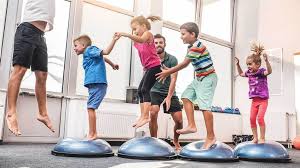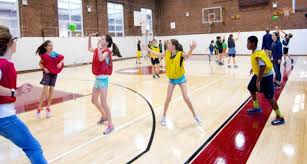Physical activity or exercise can improve your health and reduce the risk of developing several diseases like type 2 diabetes, cancer and cardiovascular disease. Physical activity and exercise can have immediate and long-term health benefits.
Most importantly, regular activity can improve your quality of life. A minimum of 30 minutes a day can allow you to enjoy these benefits.
There are many types of physical activity, including swimming, running, jogging, walking and dancing, to name a few.
Being active has been shown to have many health benefits, both physically and mentally. It may even help you live longer.
The Benefits of Physical Activity
1) Reduce Your Health Risk
1a) Cardiovascular Disease
Heart disease and stroke are two of the leading causes of death in the United States. Following the recommendations and getting at least 150 minutes a week of moderate-intensity aerobic activity can put you at a lower risk for these diseases.
You can reduce your risk even further with more physical activity. Regular physical activity can also lower your blood pressure and improve your cholesterol levels.
1b) Type 2 Diabetes and Metabolic Syndrome
Regular physical activity can reduce your risk of developing type 2 diabetes and metabolic syndrome. Metabolic syndrome is a condition in which you have some combination of too much fat around the waist, high blood pressure, low High Density Lipoproteins (HDL) cholesterol, high triglycerides, or high blood sugar.
Research shows that people start to see benefits at levels of physical activity below the recommended 150 minutes a week, and additional amounts of physical activity seem to lower risk even more.
Already have type 2 diabetes? Regular physical activity can help you control your blood glucose levels. To find out more, visit Diabetes and Me.
1c) Some Cancers
Being physically active lowers your risk for developing several commonly occurring cancers. Research shows that adults who participate in greater amounts of physical activity have reduced risks of developing cancers of the:
- Bladder
- Breast
- Colon (proximal and distal)
- Endometrium
- Esophagus (adenocarcinoma)
- Kidney
- Lung
- Stomach (cardia and non-cardia adenocarcinoma)
Improve your quality of life. If you are a cancer survivor, research shows that getting regular physical activity not only helps give you a better quality of life, but also improves your physical fitness.
Read Also: 6 Amazing Ways to improve Mental Health
2) Strengthen Your Bones and Muscles
As you age, it’s important to protect your bones, joints, and muscles. Not only do they support your body and help you move, but keeping bones, joints, and muscles healthy can help ensure that you’re able to do your daily activities and be physically active.
Research shows that doing aerobic, muscle-strengthening, and bone-strengthening physical activity at a moderately-intense level can slow the loss of bone density that comes with age.
Hip fracture is a serious health condition that can have life-changing negative effects, especially if you’re an older adult. Physically active people have a lower risk of hip fracture than inactive people. Among older adults, physical activity also reduces the risk of falling and injuries from falls.
Research demonstrates that physical activity programs that include more than one type of physical activity such as aerobic, muscle strengthening, and balance physical activities (also known as multicomponent physical activity) are most successful at reducing falls and fall-related injuries.
In addition, weight bearing activities that produce a force on the bones (e.g., running, brisk walking, jumping jacks, and strength training) are examples of bone strengthening activities that can help promote bone growth and bone strength. These activities also help reduce the risk of fall-related injuries and fractures.

Regular physical activity helps with arthritis and other rheumatic conditions affecting the joints. If you have arthritis, doing 150 minutes a week of moderate-intensity aerobic physical activity, if able plus muscle-strengthening activity not only improves your ability to manage pain and do everyday tasks, but it can also make your quality of life better.
Build strong, healthy muscles. Muscle-strengthening activities like lifting weights can help you increase or maintain your muscle mass and strength. This is important for older adults who experience reduced muscle mass and muscle strength with aging.
Slowly increasing the amount of weight and number of repetitions you do as part of muscle strengthening activities will give you even more benefits, no matter your age.
3) Improve Your Ability to do Daily Activities and Prevent Falls
A functional limitation is a loss of the ability to do everyday activities such as climbing stairs, grocery shopping, or playing with your grandchildren.
How does this relate to physical activity? If you’re a physically active middle-aged or older adult, you have a lower risk of functional limitations than people who are inactive.
Improve physical function and decrease the risk of falls. For older adults, multicomponent physical activity is important to improve physical function and decrease the risk of falls or injury from a fall.
Multicomponent physical activity is physical activity that includes more than one type of physical activity, such as aerobic, muscle strengthening, and balance training. Multicomponent physical activity can be done at home or in a community setting as part of a structured program.
Read Also: 5 elements of a well-rounded fitness routine
4) Increase Your Chances of Living Longer
Science shows that physical activity can reduce your risk of dying early from leading causes of death, like heart disease and some cancers. This is remarkable in two ways:
- Only a few lifestyle choices have as large an impact on your health as physical activity. People who are physically active for about 150 minutes a week have a 33% lower risk of all-cause mortality than those who are physically inactive.
- You don’t have to do high amounts of activity or vigorous-intensity activity to reduce your risk of premature death. Benefits start to accumulate with any amount of moderate- or vigorous-intensity physical activity.
5) A healthier state of mind
A number of studies have found that exercise helps depression. There are many views as to how exercise helps people with depression:
- Exercise may block negative thoughts or distract you from daily worries.
- Exercising with others provides an opportunity for increased social contact.
- Increased fitness may lift your mood and improve your sleep patterns.
- Exercise may also change levels of chemicals in your brain, such as serotonin, endorphins and stress hormones.
Here are more useful physical activity resources to guide you further:
Reference
